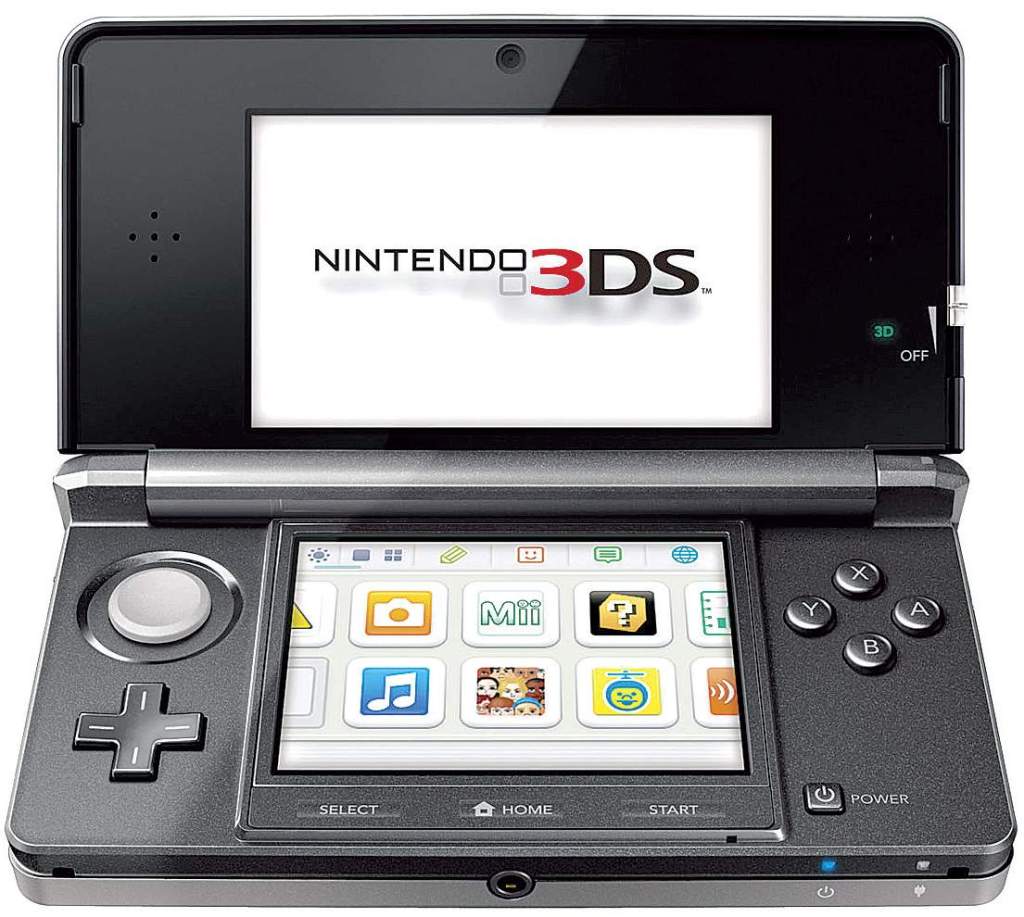Nintendo’s new dimension
Published 5:00 am Friday, April 8, 2011

- Nintendo's 3DS, priced at $249.99, is a good system with comfortable controls, an impressive 3-D display and cool augmented reality games. There is a big problem with battery life, however.
Announced last March, Nintendo’s 3DS has been highly anticipated by gamers the world over. Any new Nintendo handheld is big news; the company has dominated the category since the release of the original Game Boy in 1989. While competitors from Sega to Sony have tried to make a dent in Nintendo’s market share, all have failed. The 3DS is Nintendo’s hope for staying on top of the handheld mountain.
The hardware
Priced at $249.99, the 3DS costs $100 more than the DS when it launched in 2004. For the most part, we are impressed with the unit. It’s comparable to the build quality and size of the DS Lite, the much-improved second iteration of the original DS. Overall, it feels well made and durable, a hallmark of past Nintendo devices.
The unit has a physical power button along with the traditional d-pad, face buttons, and left and right shoulders. The select, start, and home buttons are placed under the bottom screen. It also adds an analog pad, similar to that of the PSP’s. However, it feels much better; the concave pad has a rubberized finish, making it more comfortable than the PSP’s analog nub. Volume, wireless, and 3-D functions are assigned to sliders on the side of the unit. The cartridge slot is in the same location as it was on the DS Lite. It accommodates both 3DS and DS cartridges.
The top screen, which is used for 3-D display, is a wider aspect ratio than that of the DS, measuring 3.53 inches wide by 1.81 inches high and featuring a resolution of 800 x 240 pixels. The lower touchscreen sports a much lower 320 x 240 resolution at the same dimensions as the DS’s screen. As before, the touch functionality is accurate and responsive.
The unit also comes with a charging cradle, which lets you set it on your desktop to charge through a plastic wedge base. This also comes in handy if you want to play at a table or desk, allowing you to keep a steady viewing angle.
The 3DS includes back- and forward-facing cameras. The back-facing array is actually two stereoscopic cameras, which allow you to take 3-D pictures and save them to the included 2GB Toshiba SD memory card. With a resolution of 640 x 480 pixels and no flash, the 2-D images aren’t on par with most cellphone cameras, let alone dedicated digital cameras.
The included stylus now fits into a slot on the top of the unit, under the hinge. It has a metallic finish, and now telescopes out to make it a bit longer than the stylus on the DS Lite.
The tech
The first time you see 3-D effects in real time without glasses is memorable. It’s an amazing bit of technology. In my play sessions, I didn’t encounter any issues with eyestrain, which some doctors in Japan had worried about prior to the 3DS’ launch. For those with more sensitive vision, you can turn down or totally disable the 3-D display at any time with the slider control.
Every game we played was fully functional in 2-D. However, I have some reservations about the 3-D viewing angle, which must be very precise. Tipping the unit in any direction, even slightly, will result in an annoying “double vision” effect.
Visually, the 3DS falls somewhere between the DS and the PSP in terms of graphical power. It’s not a huge step forward, but the screen displays are bright and clear, and we noticed plenty of details that aren’t possible on the DS.
Add in the wow factor provided by the 3-D effects, and it’s a handheld that impresses.
The bottom line
As a policy, we don’t assign a grade to a system at launch, as too much can change over time in terms of both system updates and software. Ultimately, the games will define a system. However, outside of “Super Street Fighter IV: 3D Edition” and “Ghost Recon: Shadow Wars,” nothing in the launch lineup seems like a defining or system-selling title.
The 3DS itself is a well-designed, solidly made piece of hardware. Though more expensive than past Nintendo handhelds, its build and finish look and feel high quality. The controllers, buttons, and ports are all comfortable, durable and well placed.
The real hook is the 3-D display, which is quite impressive. The glasses-free experience delivers a great sense of depth without sacrificing clarity or resolution. To deliver something that’s never been done before and on a relatively affordable handheld is a major accomplishment. The big question is whether developers will make games that utilize the effect in interesting ways.
Battery concerns
Our major complaint is the 3DS’ battery life. Nintendo estimates that the system can go between three to five hours between charges. This revelation drew criticism prior to launch, and it appears to be a very real problem. In my time with the system, I’d estimate that the three- to five-hour window is sadly accurate. Don’t expect this to last you through a trans-Atlantic flight like the DS did.
At least the PSP had the excuse of a physical disc drive to explain its short battery life. Given that this is another cartridge-based handheld, it seems like a blunder on Nintendo’s part. Thankfully, third-party manufacturers like Nyko are already stepping to the fore with longer-life replacement batteries.
Top 10
HANDHELD GAMES
The editors of Game Informer Magazine rank the Top 10 handheld games for April:
1. “Super Street Fighter IV: 3-D Edition,” 3DS
2. “Tactics Ogre,” PSP
3. “Okamiden,” DS
4. “Pokemon Black/White,” DS
5. “Radiant Historia,” DS
6. “Final Fantasy IV: The Complete Collection,” PSP
7. “Monster Tale,” DS
8. “Dragon Quest VI: Realms of Revelation,” DS
9. “Ghost Recon: Shadow Wars,” 3DS
10. “Rayman 3-D,” 3DS
McClatchy-Tribune News Service
Weekly download
‘SWARM’
For: PlayStation 3 (via PlayStation Network) and Xbox 360 (via Xbox Live Arcade)
From: Hothead Games/Ignition Entertainment
ESRB Rating: Teen (animated blood, cartoon violence)
Price: $15
Imagine “Lemmings” in which you control the lemmings directly instead of simply guide them, and you have an inkling about “Swarm,” a sidescrolling platformer which tasks you with controlling 50 characters at once. The goal in “Swarm” is classically simple — get as many swarmites to the exit as possible, and keep your score multiplier high while keeping swarmite casualties to a minimum. But that’s easier said than done. The adorable swarmites — bug-eyed blue aliens who demonstrate no free will and no desire to change that — are as stupid as they look, and they’re magnets for danger.
When “Swarm’s” trickier levels ask you to perform maneuvers that would require finesse with one character, never mind 50, don’t be surprised to limp to the exit after witnessing the deaths of 500 swarmites in a few minutes’ time. Level checkpoints frequently resupply your swarmite army, but you’ll want to keep as many of your original 50 alive as possible in order to access certain level secrets and finish with a score high enough to unlock the next level.
— Billy O’Keefe, McClatchy-Tribune News Service
New game releases
The following titles were scheduled for release the week of April 3:
• “100 Classic Games” (DS)
• “The Dishwasher: Vampire Smile” (X360)
• “Remington Super Slam Hunting: Alaska” (Wii)
• “Karaoke Revolution Glee: Volume 2” (Wii)
• “StarDrone” (PS3)
• “Carnival Games: Monkey See, Monkey Do!” (X360)
• “A Fairy Tale” (DS)
• “Absolute Baseball” (DS)
— Gamespot.com








